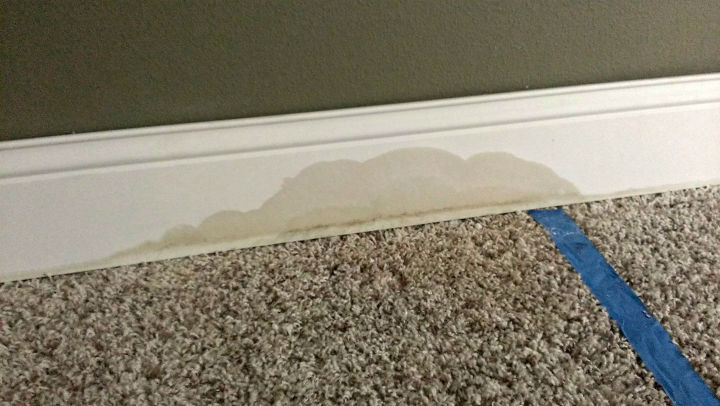Water Damage and Mold

My assumption is the water is coming in though the foundation. Any thoughts on furthering investigating the problem or fixes?
Related Discussions
How to get rid of mice?
We seem to have some unwelcome Mickeys and Minnies in our house. What is the best way to get rid of them?
How to remove popcorn ceiling with asbestos?
I want to remove my popcorn ceiling, but it has asbestos in it. How do I go about this safely?
How to caulk baseboard gaps?
How do I fill gaps at baseboard, should I caulk? If so, does anyone know how to caulk baseboards?
How to fix squeaky hardwood floors?
How do I fix squeaky hardwood floors?
How to remove and repair flood and mold damaged wood legs on furniture
I have a quilt rack that looks like the bottoms of the legs have been exposed to water damage and there may possibly be dried mold on them. Would like to know how to ... See more
How to cover water damage on paneling
Basement got water in it and the bottom of all my paneling is water stained. Carpet is light grey and now has rust spots from furniture standing on water.






Spray vinegar to mold area and let it work. Or hire a professional who look into it for further solution.
I was told that from mold need to eliminate high humidity, how to do this?
The primary method of controlling moisture is to ventilate the bathroom sufficiently.
The primary method of controlling moisture is to ventilate the bathroom sufficiently. In typical houses, the ventilation is usually carried out naturally through vents in the upper part of the walls or the ceiling. Check the quality of the draft by placing a sheet of thin paper against the vent window grille. If the current is good, the sheet will be held by the airflow. If there is low draught, you should clean the ventilation grill and sometimes the ventilation duct itself. If this measure is not enough, you can turn to an exceptional service specializing in removing mold. In this case, it is necessary to ensure an air supply from other rooms, for example, by opening the door for a while.